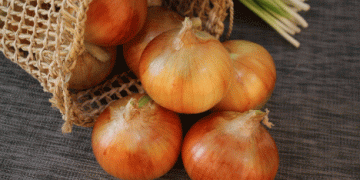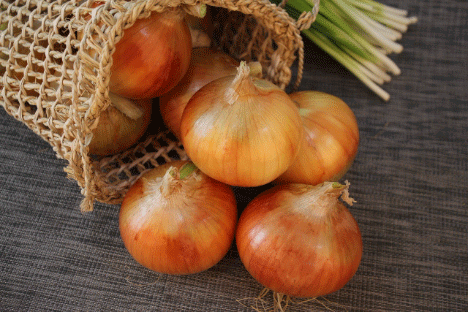In the 2023/24 export season, the Dutch onion industry experienced a significant decrease in export volumes. The latest figures reveal that Dutch onion exports totaled 1.04 million tons, a decrease of more than 7% compared to the 2022/23 season, where 1.13 million tons were shipped overseas. This decline is even more pronounced when compared to the record high of 1.3 million tons achieved in the 2021/22 season, according to data from GroentenFruit Huis and the Holland Onion Association.
Key Reasons for the Decline in Dutch Onion Exports
Several factors have contributed to the reduction in onion exports from the Netherlands:
- Climate and Weather Conditions: The 2023 growing season was impacted by adverse weather conditions, including excessive rainfall and inconsistent temperatures, which affected onion yields. According to recent climate reports, the Netherlands experienced significant weather variations, which led to lower yields and impacted the quality of the produce available for export.
- Increased Domestic Costs: Rising production costs due to higher energy prices and increased labor expenses have also played a role in the decline of onion exports. The Netherlands saw a 9% increase in production costs for vegetables in 2023, driven by soaring energy prices and higher wages for farm workers, as reported by Wageningen University & Research.
- Global Supply Chain Issues: Disruptions in the global supply chain, including shipping delays and logistical challenges, have also hindered Dutch onion exports. The International Trade Centre has noted ongoing supply chain issues affecting agricultural exports globally, which have been exacerbated by geopolitical tensions and post-pandemic recovery challenges.
Key Markets and Export Trends
Despite the overall decline, some export markets have shown resilience and growth:
- Senegal remains the largest market for Dutch onions, increasing its imports to 170,000 tons this season, an 8,000-ton rise from the previous year. This reflects ongoing demand in West Africa for high-quality onions from the Netherlands, as noted by the Food and Agriculture Organization (FAO).
- Brazil experienced a significant increase in onion imports from the Netherlands, with a rise of 6,500 tons compared to previous years. This growth in the Brazilian market is attributed to a surge in domestic demand and a favorable trade environment.
However, there have been notable declines in exports to several countries:
- Germany and France saw reductions in onion imports by 13,000 tons and 10,000 tons, respectively. This decline reflects a shift in sourcing strategies and increasing local production in these markets.
- The Ivory Coast also witnessed a drop of nearly 25,000 tons in onion imports from the Netherlands, which can be linked to both local production increases and changing market dynamics.
Opportunities for the Dutch Onion Industry
Looking forward, there are several opportunities for Dutch onion growers and exporters:
- Diversification of Export Markets: Expanding into emerging markets and strengthening trade relationships with existing partners like Senegal and Brazil can help offset declines in traditional markets. The Netherlands’ strategic focus on these growing markets aligns with trends reported by the European Commission’s Directorate-General for Agriculture and Rural Development.
- Investment in Sustainable Practices: Investing in sustainable farming practices can enhance product quality and appeal to environmentally conscious consumers. According to the EU Green Deal, sustainable agriculture practices are expected to gain increasing importance in international trade.
- Technological Innovations: Embracing technological advancements in crop management and supply chain logistics can improve efficiency and reduce costs. Technologies such as precision agriculture and advanced logistics platforms are vital for staying competitive in the global market.
The 2023/24 decline in Dutch onion exports highlights the challenges faced by the industry, including adverse weather conditions, rising costs, and global supply chain issues. However, there are promising opportunities for growth through market diversification, sustainable practices, and technological innovations. By addressing these challenges and seizing these opportunities, Dutch onion exporters can work towards a more resilient and successful future.































